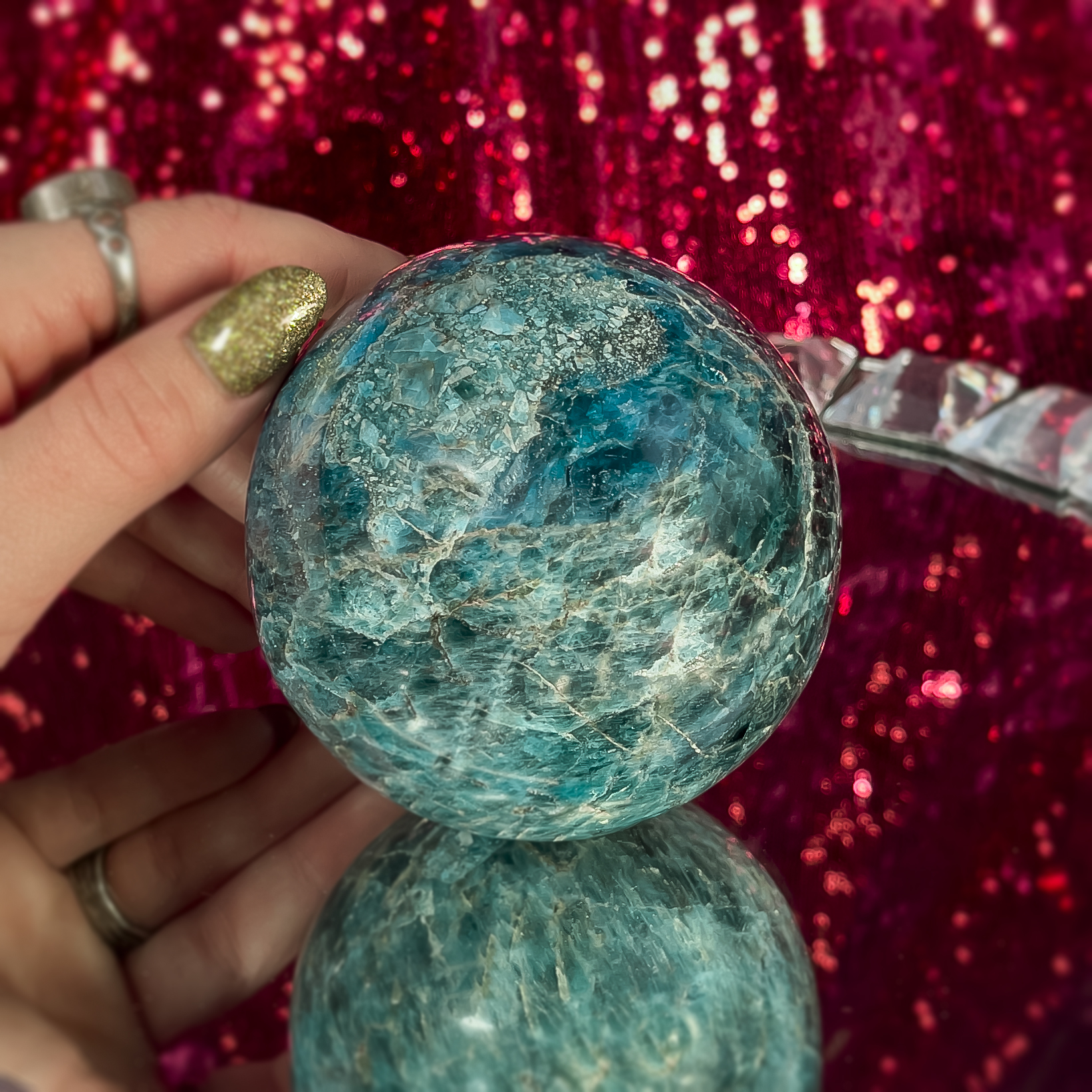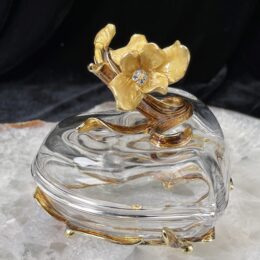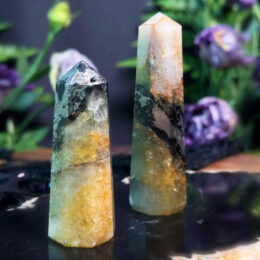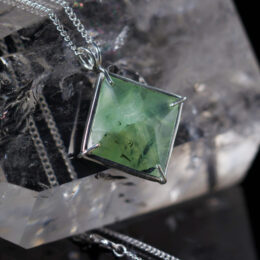Your cart is currently empty!
Apatite Guide: Properties and Meaning

Apatite Properties
Color: Yellow, green, blue, violetMohs Hardness: 5-0Chakra: VariesCrystal Structure:HexagonalLocation: Global
About Apatite
Apatite is a mineral that comes in various colors, such as yellow, green, blue, and violet. It is known for its versatility and powerful properties. Depending on its color, Apatite is associated with different chakras, with yellow Apatite linked to the solar plexus chakra, green Apatite to the heart chakra, blue Apatite to the throat chakra, and violet Apatite to the third eye chakra. This mineral possesses numerous healing abilities, including promoting communication, enhancing creativity, aiding in weight loss, and supporting spiritual growth and intuition.
The history of Apatite
The history of Apatite dates back to ancient times. The name “Apatite” is derived from the Greek word “apate,” meaning deceit, due to its resemblance to other gemstones. It was first discovered in the 18th century in Germany, and since then, it has been found in various parts of the world, including Brazil, Mexico, Russia, and Madagascar. Apatite has been used for its metaphysical properties and healing benefits by different cultures throughout history. Its vibrant colors and unique properties have made it a sought-after gemstone for both spiritual and aesthetic purposes.
What are the healing properties of Apatite?
Apatite promotes communication, enhances creativity, and aids in weight loss.
What are the metaphysical/spiritual properties of Apatite?
Apatite helps with spiritual growth and intuition.
What colors does Apatite come in?
Apatite comes in a variety of colors, including yellow, green, blue, and violet.
Which chakra is associated with yellow Apatite?
Yellow Apatite is associated with the solar plexus chakra.
Which chakra is associated with green Apatite?
Green Apatite is associated with the heart chakra.
Which chakra is associated with blue Apatite?
Blue Apatite is associated with the throat chakra.
Which chakra is associated with violet Apatite?
Violet Apatite is associated with the third eye chakra.
How would you describe Apatite?
Apatite is a versatile and powerful mineral that can benefit individuals in many different ways.
Apatite FAQ
What is Apatite used for?
Apatite is commonly used in jewelry, particularly as a gemstone in rings, necklaces, and earrings. It is also used in the production of phosphoric acid, which is used in fertilizers, food additives, and industrial applications.
What does Apatite do?
Apatite enhances communication and self-expression. It stimulates creativity and intellect, making it a popular choice for artists and writers. Additionally, Apatite promotes motivation, ambition, and personal growth.
Can Apatite go in water?
Apatite is generally safe to be submerged in water. However, it is recommended to avoid prolonged exposure to water or submerging it for extended periods, as it may affect the durability and appearance of the gemstone.
How to cleanse Apatite?
To cleanse Apatite, you can use various methods such as placing it under running water, using a mild soap and water solution, or using a crystal cleansing spray. It is important to handle Apatite gently and avoid using harsh chemicals or abrasive materials that may damage the gemstone.
What does Apatite do spiritually?
Apatite has spiritual properties that enhance intuition, psychic abilities, and spiritual growth. It helps in connecting with higher realms and accessing spiritual guidance. Apatite is also associated with balancing the chakras and promoting spiritual healing.
How to clean Apatite?
To clean Apatite, you can use a soft cloth or brush to gently wipe away any dirt or debris. Avoid using harsh chemicals or ultrasonic cleaners, as they may damage the gemstone. It is recommended to store Apatite separately from other gemstones to prevent scratching.
How to spot fake Apatite?
To spot fake Apatite, look for signs such as unusually low prices, lack of transparency, and inconsistent color or clarity. Genuine Apatite should have a vibrant color and a natural, untreated appearance. It is advisable to purchase Apatite from reputable sources to ensure its authenticity.
Is Apatite toxic?
Apatite is generally non-toxic and safe to handle. However, it is not recommended to ingest or inhale Apatite dust or powder, as it may contain trace elements that could be harmful. It is always best to handle gemstones with care and take necessary precautions.
Where is Apatite found?
Apatite is found in various locations around the world, including Brazil, Mexico, Russia, Madagascar, and the United States. It can also be found in igneous rocks, metamorphic rocks, and sedimentary deposits.
How is Apatite pronounced?
Apatite is pronounced as “AP-uh-tahyt” with the emphasis on the first syllable. The “a” in Apatite is pronounced like the “a” in “apple.”
What chakra is associated with Apatite?
Apatite is commonly associated with the Throat Chakra, which is located in the throat area. It promotes clear communication, self-expression, and the ability to speak one’s truth.
Can Apatite be in the sun?
Apatite can be exposed to sunlight without any significant issues. However, prolonged exposure to direct sunlight may cause the color of the gemstone to fade over time. It is advisable to store Apatite in a cool, dark place when not in use to preserve its color and quality.
How to charge Apatite?
To charge Apatite, place it in direct sunlight or moonlight for a few hours. This allows the gemstone to absorb the energy from the sun or moon, revitalizing its metaphysical properties. You can also use visualization or intention to infuse positive energy into the Apatite.
What is the hardness of Apatite?
Apatite has a hardness of 5 on the Mohs scale, which means it is relatively soft compared to other gemstones. It is important to handle Apatite with care to avoid scratching or damaging the gemstone.













